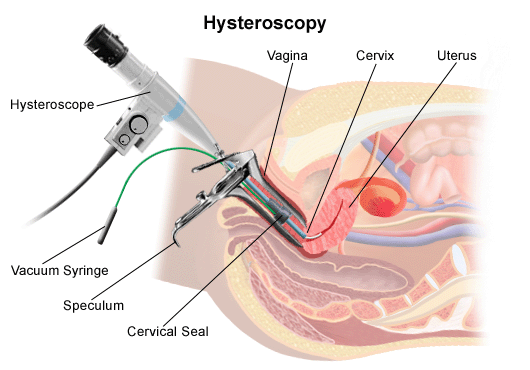
If you’re having heavy menstrual periods and severe cramping, or your doctor needs to know more about your reproductive health, she may recommend you have a hysteroscopy. The procedure can give her an up-close look at your cervix and uterus and help her learn what’s causing problems.
ProcedureDuring a hysteroscopy, your doctor inserts a hysteroscope -- a thin tube with light on the end into your vagina. She’ll be able to see into your cervix and inside your uterus.If she finds anything abnormal, she can take a sample for later testing.
Among the most common reasons for a hysteroscopy are periods that are longer or heavier than normal, or bleeding between periods.
You might also need the procedure in these situations:
A hysteroscopy can either be in a hospital or at your doctor’s office. You can be either awake or under general anesthesia during the procedure. If you’re awake, your doctor will give you medicine to help you relax. She’ll also use medication or tools called dilators to help open your cervix.
She’ll likely use a tool called a speculum to keep your vagina open. If you’ve ever had a Pap smear, your doctor has probably used one during that procedure, too.
Next, she’ll gently insert the hysteroscope through the cervix into your uterus. Then she’ll push gas or a liquid-like saline through the hysteroscope into your uterus to expand it. This will give her a clear view of its lining and the opening of your fallopian tubes through the hysteroscope.
After the ProcedureYou’ll probably be able to go home soon after. But if you received local or general anesthetic, you’ll need someone to drive you.
For a few days after the procedure, you may have some mild cramping or bleeding. You might also have gas that can last for about 24 hours. Your doctor may give you medicine to help with any pain.
You’ll have to avoid sex for at least 2 weeks after the procedure. Before you’re sent home, your doctor will tell you more about how to take care of yourself after surgery.
RisksJust like any medical procedure, you could have some complications from a hysteroscopy, including:
If you experience symptoms like a fever, severe abdominal pain, or heavy bleeding after the procedure, call your doctor immediately or go to the emergency room.
HYSTEROSCOPY
If you’re having heavy menstrual periods and severe cramping, or your doctor needs to know more about your reproductive health, she may recommend you have a hysteroscopy. The procedure can give her an up-close look at your cervix and uterus and help her learn what’s causing problems.